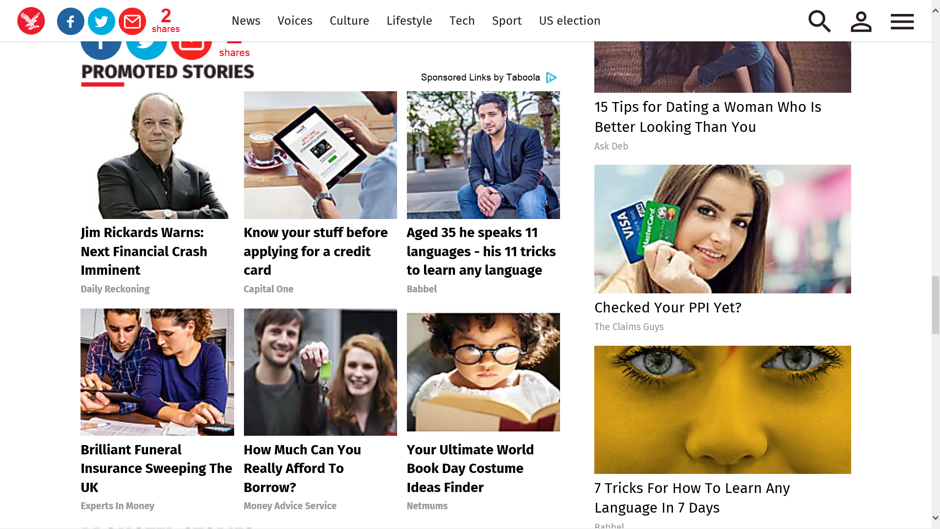Here’s a super-quick quiz.
Imagine a new visitor has just arrived at one of your blog posts…
…or perhaps they’ve opened one of your emails.
Which of these two photographs is most likely to have the better impact?
This one?

Or this one?

I’ll reveal the answer in a moment.
But here’s why it’s important…
The science behind the imagery: which elements really grab people’s attention and why
Pictures are more important than they used to be for online marketers.
Thanks to the phenomenal rise of networks like Instagram, almost all the social networks have increased the prominence of photos, particularly Facebook and Twitter.
Thanks to the ease of blogging and website platforms like WordPress, with their stylish off-the-peg themes, websites have become far more visual and sophisticated.
Users EXPECT to see striking images…
And with shortening attention spans and information overload, images are a powerful way to attract attention and get the gist of your message across almost instantly.
There’s strong research to back this up…
A landmark 2006 study by Georg Stenberg at Kristianstad University in Sweden revealed something known as the picture superiority effect.
It shows that our brains have evolved to make quick judgements on whether someone or something is friendly or hostile, or how far away a threat is.
We do this by taking in visual information and processing it very quickly.
Not only do we react to images on an emotional level but we store them in the memory more efficiently. Our brains retain 80% of what we see, but only 30% of what we read and 10% of what we hear.
To illustrate, in a 1970 study (Standing, Conezio, & Haber, 1970), subjects looked at 2,000 pictures for 10 seconds each. When they were tested on these images several days later, they were over 90% accurate.
It wasn’t just looking at the pictures themselves that sparked recognition. The images were recalled even without even looking at the original picture.
So when it comes to your website, your marketing materials and content (blog posts, emails and social media updates) images are extremely important….
In the blink of an eye they can do the following:
• Communicate Trustworthiness. On a website shop customers see a product image as a more accurate judge of quality than the product specification information (63%), description (54%) and reviews (53%) [source: Jeff Bullas]
• Increase Traffic. Articles with images get 94% more views than those without. [source: Jeff Bullas]
• Get Shared More. Tweets with images get 18% more clickthroughs, 89% more favourites and 150% more retweets. Source: Digitalinformationworld.com
• Persuade More. Presentations that include visuals are 43% more persuasive, according to one study. http://misrc.umn.edu/workingpapers/fullpapers/1986/8611.pdf
• Communicate Complex Ideas More Easily. In a 1982 research paper it was found that people following directions that combine text with illustrations do 323% better than people following directions without illustrations. 1982, http://link.springer.com/article/10.1007%2FBF02765184
Despite this rollcall of benefits, a lot of small businesses miss a trick here – they either use irrelevant and poor photos, or simply don’t exploit them to their full potential.
For instance, going back to my quiz…
Which of those photos at the top of my email is most likely to have an impact on your reader?
• The beautiful, evocative landscape in bold, attractive colours?
• Or the unshaven, melancholic-looking man in the cap?
The answer is…
Visuals that have people in them tend to have the most impact
Research in Psychological Science (2010) by Aude Oliva shows that pictures with people in them are highly memorable, while beautiful landscapes are much less so.
Also, images of enclosed spaces with people in them (faces clearly visible) are better than big beautiful vistas with human figures in them.
This because we are hardwired from birth to seek for emotions in another face.
So the answer to the quiz is that our slightly grizzled chap is a more emotionally impactful image than our idyllic sunset over the lake.
In an even more recent study, the Georgia Institute of Technology and Yahoo Labs researchers looked at 1.1 million photos on Instagram and discovered that pictures with human faces are 38% more likely to get “likes” than photos with no faces.
This will apply wherever you are marketing on Social Media, from Facebook to Twitter to LinkedIn.
The more intense the emotion shown, the more likely we are to feel emotionally connected to it, and remember it later.
Just look at the ‘clickbait’ adverts at the bottom of articles on news websites, where businesses clamour to get their piece of free content read.

All of the above use humans, all but one use human faces, and 6 out of 8 show direct eye contact with the viewer.
So as a very simple starter guide….
– Go for close up images of people with emotional expressions over neutral.
– Make sure their mood is related to how you want your customer to feel and react on that page. Make sure it’s part of the story.
– Use colour and try to include a background if you can.
Of course, simply adding a face to every page of your blog, every email and every tweet is not the answer.
There are four factors to remember:
1. The key to success is relevancy. Content with relevant images gets 94% more views than content without relevant images, according to QuickSprout. While relevant imagery can add power to your online content, irrelevant imagery will make you invisible, or, even worse, annoying or ‘dodgy-looking’.
2. Avoid cliché – by repeating the same trick, always using stock faces from stock photos, or constantly posting ‘selfies’ you risk losing impact and looking the same as everyone else. If you run a retirement advice service, pictures of smiling pensioners are a cliché, so find something different about your images.
3. Use your own images – from time to time, try and use your own photos – they could be of you, team members, customers, influential people you meet at conferences and events. This makes your business more unique and personal.
4. Be varied and surprising – seek out original, interesting and unusual images. Make them part of a varied mix of other visual elements such as illustrations, charts, diagrams and product photos.
Where to get great professional photos to use on your website or blog
If you’re a member of Digital Upstart Insider then you can visit the website where I’ve posted an extensive list of free and subscription photos websites here.
If you’re not a member then click here for risk-free trial access today.
